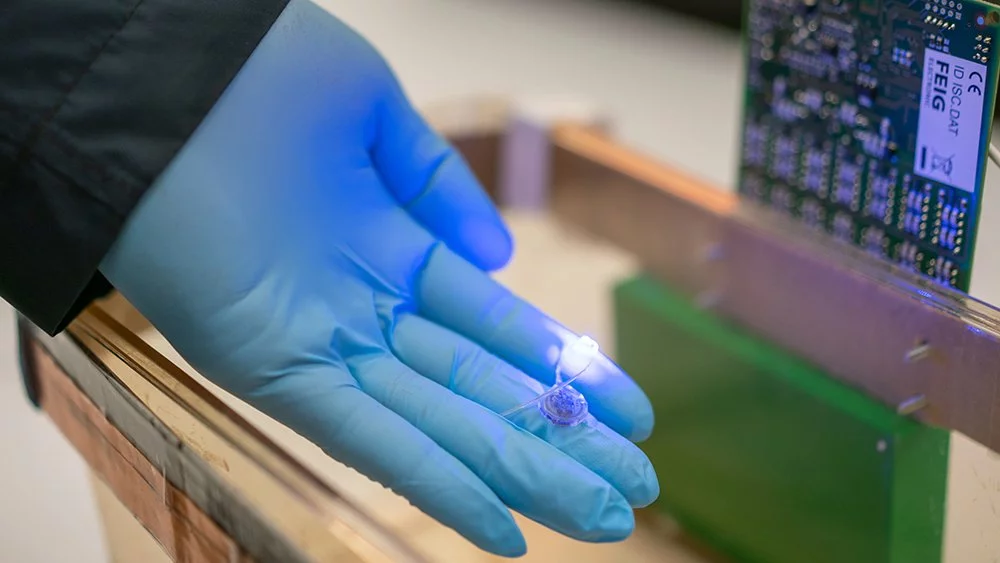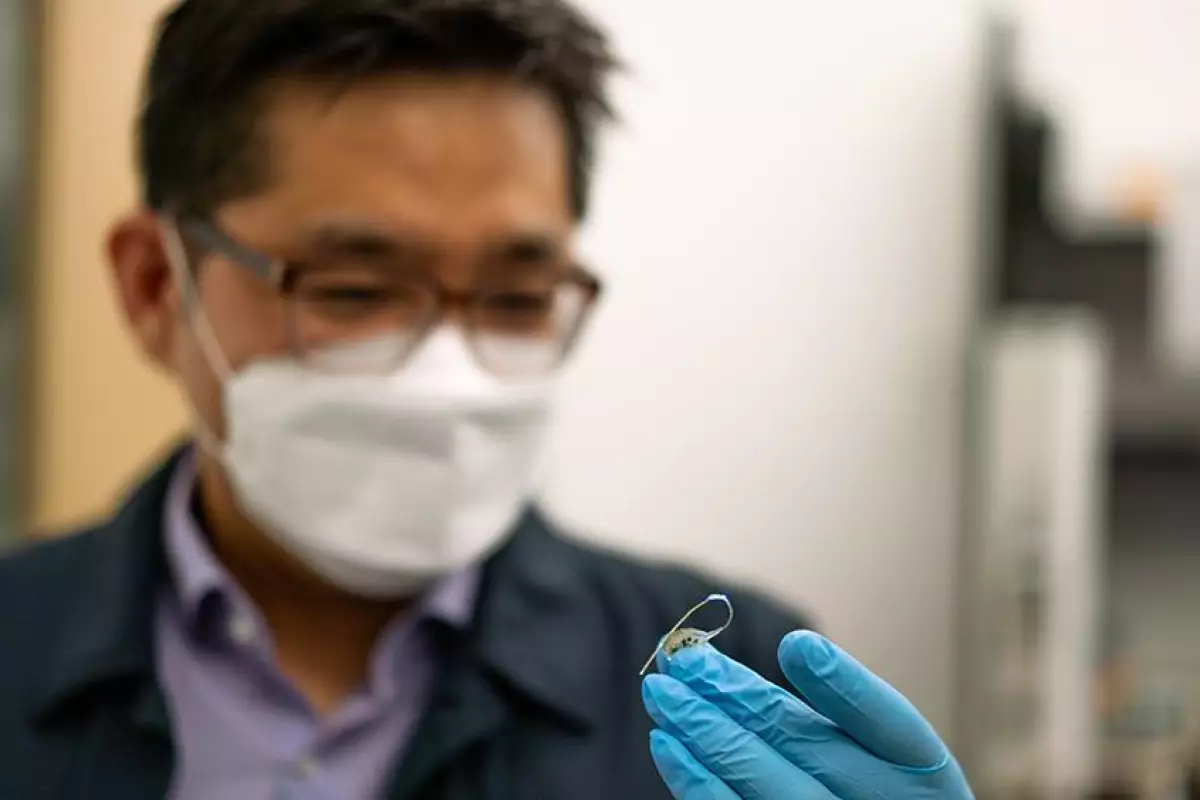When an obese person really needs to lose weight, gastric bypass surgery is sometimes performed – but it's quite an invasive procedure. An experimental new implant, however, may produce similar results with much less fuss.
Developed at Texas A&M University by a team led by Asst. Prof. Sung Il Park, the "paddle-shaped" device is about 1 cm long (0.4 in). It has micro LEDs at its flexible tip, along with a coil antenna and special microchips in its base. This setup allows the device to receive incoming radio waves, which are converted to an electrical current that powers the LEDs.

In what is described as a relatively simple procedure, the implant is surgically inserted into the stomach, where it's anchored adjacent to endings of the vagus nerve. This nerve allows the brain to communicate with various organs, including the stomach.
When an external transmitter emits a radio signal of the appropriate frequency, the implant receives the radio waves, causing its micro LEDs to illuminate. The light proceeds to stimulate the nerve endings, sending a signal to the brain that produces a feeling of "fullness." As a result, the patient doesn't feel hungry, so they eat less.
And although there are already other implants that give patients a full feeling by stimulating the vagus nerve, they're more like pacemakers, in that they incorporate wires that lead to an attached power source. Because the new device is externally powered, it's much smaller and thus easier to implant. That said, scientists at the University of Wisconsin-Madison have developed a battery-free implant that's powered by stomach movements.
The A&M technology has so far been successfully tested on mice. It is described in a paper that was recently published in the journal Nature Communications.
Source: Texas A&M University




